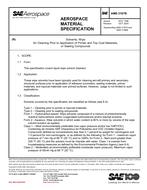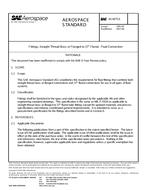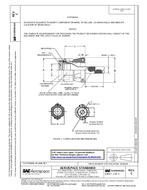Three levels of fan structural analysis are included in this practice:
-
Initial Structural Integrity
-
In-vehicle Testing
-
Durability Test Methods
The Initial Structural Integrity section describes analytical and test methods used to predict potential resonance and, therefore, possible fatigue accumulation.
The In-vehicle (or machine) section enumerates the general procedure used to conduct a fan strain gage test. Various considerations that may affect the outcome of strain gage data have been described for the user of this procedure to adapt/discard depending on the particular application.
The Durability Test Methods section describes the detailed test procedures that may be used depending on type of fan, equipment availability, and end objective.
Each of the previous levels builds upon information derived from the previous level. Engineering judgment is required as to the applicability of each level to a different vehicle environment or a new fan design.
This SAE Recommended Practice is applicable to medium and heavy-duty trucks, buses, construction equipment, industrial, and agricultural equipment. It does not necessarily include passenger cars and light trucks.
The usage of nonmetallic construction necessitates areas of evaluation not required by metallic designs. Chief among these are temperature extremes, moisture content, impact resistance, chemical attack, material purity/homogeneity, and aging/weathering. Areas of evaluation affecting both metallic and nonmetallic fans, but requiring somewhat different approaches with nonmetallic parts, include natural frequency determination and durability testing.
Product Details
- Published:
- 01/01/2012
- File Size:
- 1 file , 180 KB


